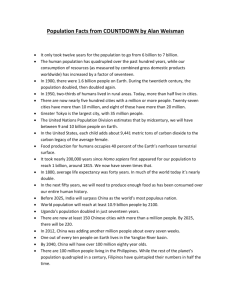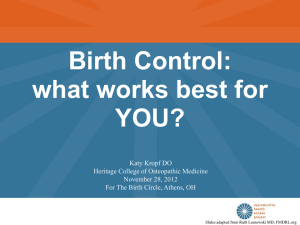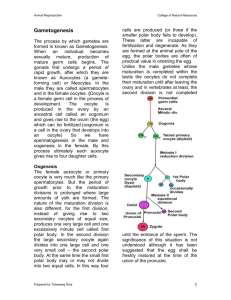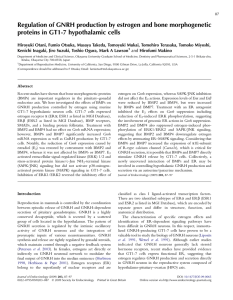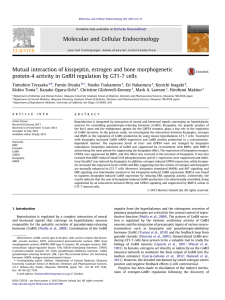Sommereksamen 2012 Titel på kursus: Reproduktionsorganernes
advertisement
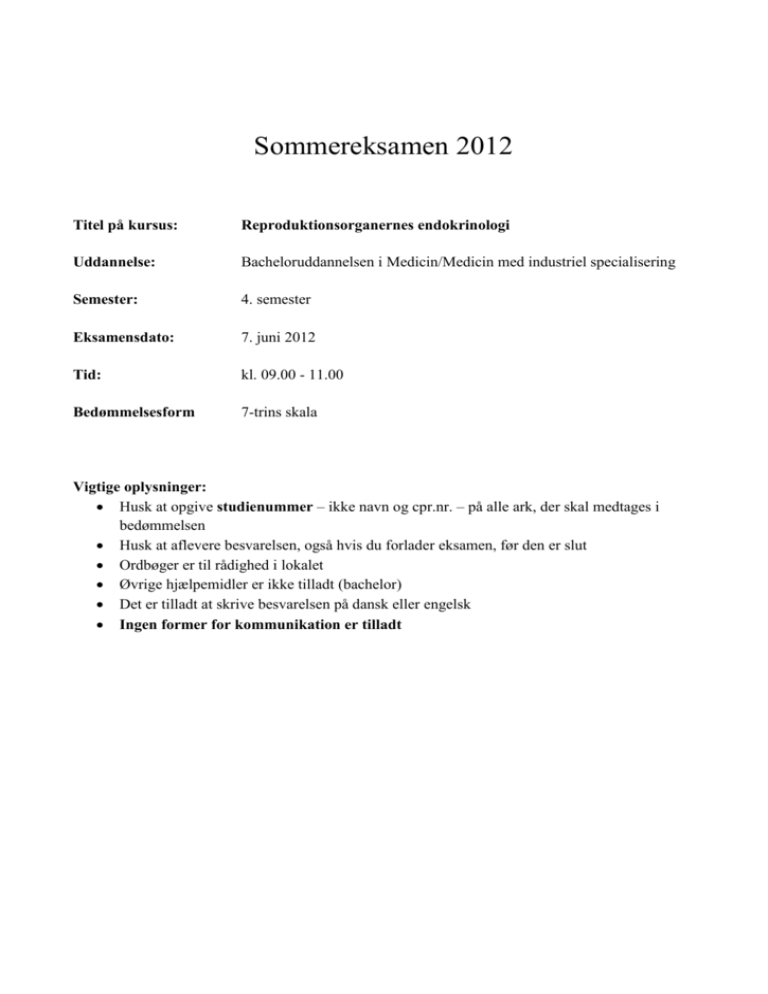
Sommereksamen 2012 Titel på kursus: Reproduktionsorganernes endokrinologi Uddannelse: Bacheloruddannelsen i Medicin/Medicin med industriel specialisering Semester: 4. semester Eksamensdato: 7. juni 2012 Tid: kl. 09.00 - 11.00 Bedømmelsesform 7-trins skala Vigtige oplysninger: Husk at opgive studienummer – ikke navn og cpr.nr. – på alle ark, der skal medtages i bedømmelsen Husk at aflevere besvarelsen, også hvis du forlader eksamen, før den er slut Ordbøger er til rådighed i lokalet Øvrige hjælpemidler er ikke tilladt (bachelor) Det er tilladt at skrive besvarelsen på dansk eller engelsk Ingen former for kommunikation er tilladt 1 Erection is supported by parasympathetic signaling from branches originating in one of the following: A Plexus lumbalis B Plexus aorticus C Plexus hypogastricus inferior D Plexus epigastricus E Plexus hypogastricus superior Max points : 1 Obtained points 2 During fertilization which one the following pairs of cells fuse together? A Primary oocyte and primary spermatocyte B Secondary oocyte and secondary spermatocyte C Primary oocyte and spermatozoon D Definitive oocyte and definitive spermatocyte E Secondary oocyte and spermatozoon Max points : 1 Obtained points C E 3 In susceptible tissues, the testosterone is chemically modified. This modification entails one of the following: A Hydroxylation B Reduction C Aromatization D Oxidation E Hydration Max points : 1 Obtained points 4 B Name fours steps in the chain of molecular events in the penile smooth muscle that lead to erection following autonomic neural activation. 1. NO synthesis/release 2. cGMP synthesis 3. Ca2+ channel block 4. Decrease of intracellular Ca2+ Max points : 4 Obtained points 2 5 Name three theories/concepts that attempt to explain biological basis for different sexual orientation (homosexuality). 1. Defect of dimorphic brain centers 2. Imbalance of sex hormones during prenatal period 3. Factor that is associated with female fertility, previous birth of a boy (production of anti-Y antibodies that effect the dimorphic centers) Max points : 3 6 Obtained points Describe blood circulation in flaccid penis and during erection. Flaccid – Blood shunts from deep artery (arteria profunda penis) to dorsal vein (vena dorsalis penis profunda). Erection – Blood streams from deep artery through helicine arteries into cavernous spaces. The venous drainage is restricted. Max points : 5 7 Obtained points Describe what processes are involved in the “capacitation” of sperm and where it takes place. 1. Removal of seminal proteins and surface glycopreoteins 2. Uterine tubes Max points : 2 Obtained points 3 8 Which one of the following can be used to enhance ovulation in patients with oligoovulation or anovulation? A GnRH agonist B Estrogen C Estrogen antagonist at hypothalamus D GnRH antagonist E Progesterone antagonist Max points : 1 Obtained points 9 Describe what “maturation” of sperm means and where it takes place. 1. Sperm acquires potential to fertilize egg 2. Epididymis Max points : 2 10 Obtained points Describe 5 substances produced by Sertoli cells. 1. ABP 2. MIF 3. DH-testosterone 4. Estradiol 5. Inhibin Max points : 5 11 Obtained points Name immediate androgen precursors to the following hormones: Estrone – androstendione Estriol – dehydroepiandrosterone Estradiol - testosterone Max points : 3 Obtained points 4 C 12 Topic: Physiology of testis Options: Is responsive to LH A. Produces androgen-binding protein (ABP) B. Is responsive to FSH C. Produces estradiol D. Produces testosterone E. Produces inhibin F. Produces MIF G. Produced DH-testosterone H. Lead in: For each of the items below identify the most appropriate item/items from the list above. Leydig cells A, E Sertoli cells B, C, D, F, G, H Max point 8 13 Obtained points Name and describe the three steps involved in the process of egg fertilization. 1. Penetration of corona radiata The spermatozoa migrate freely through. 2. Penetration of zona pellucida The spermatozoa get attached through specific ligand (ZP3). Enzymes get released through acrosomal reaction and enable the penetration. Upon reaching cytoplasmic membrane, cortical reaction takes place in the egg that renders zona pellucida impenetrable - zona reaction. 3. Fusion of cell membranes After fusion, the sperm nucleus translocates into the egg, where they form pronuclei. Max points : 8 Obtained points 5 14 Topic: Clinical case Shireen Husseini is a 15-years old female who comes to her practitioner and asks for a prescription of oral contraceptives. She has a boyfriend, and became sexually active within the last two months. They are not using any protection and Shireen is afraid she might get pregnant. Shireen has an unremarkable medical history. She reached menarche three years ago, her periods are regular, has no premenstrual tension or acne. She is not using elicit substances, neither alcohol nor tobacco. Lead in: Based on the clinical case above answer the following 5 questions. 14.1 Name five basic approaches/methods in contraception. 1. 2. 3. 4. 5. Barrier contraception, chemical contraception/spermicides, hormonal contraception, sterilization, IUD, fertility awareness (timing), coitus interruptus Max points : 5 14.2 Opnåede points Name three mechanisms of action of hormonal contraceptives. 1. Inhibition of ovulation 2. Effect on cervical mucosa and secretions 3. Effect on endometrium 6 Max points : 3 Opnåede points 14.3 Name four potential side/adverse effects of hormonal contraception in addition to endometrial atrophy, inhibition of lactation, weight increase, hypertension, and liver and cervical cancer. 1. 2. 3. 4. Deep vein thrombosis, breakthrough bleeding, headache, nausea, mood swings/depression, decreased sex drive, decreased menstrual pain, breast engorgement/tenderness, acne Max points : 3 Opnåede points 15 Identify four drugs that may be used in protocols to induce superovulation during in vitro fertilization (IVF). A Estrogen agonist B GnRH agonist C Estrogen antagonist at hypothalamus D GnRH antagonist E Estrogen antagonist at breast F FSH G LH H Estrogen I Progesterone Max points : 4 Obtained points 16 A B C D E Which one of the following is involved in contraction of penile trabecular muscles? Activation of guanylate cyclase Closure of Ca2+ channels Activation of NO synthase Activation of cAMPase Activation of phosphodiesterase 7 B D F G E Max points : 1 Obtained points 8




